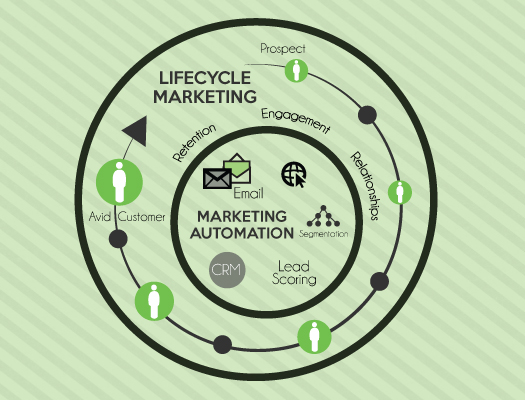I started this internship completely unaware of the difference between marketing automation and lifecycle marketing. Coming from a farm background, I really only have a rudimentary knowledge of marketing from classes I have taken in college and a summer internship in Indianapolis. A month in and wealth of information later, I am starting to understand the industry better. In my “sink or swim” education, a key item to understanding everything is knowing the difference between marketing automation and lifecycle marketing. Talking to peers has revealed a need for an explanation of the difference.
Why is marketing automation important? Well, because we live in the Age of Information, consumers now go through 60 to 90 percent of the selling process before they even speak with a sales person. Think about it, do you buy a phone or computer without first reading a review and narrowing down your choices? It’s the same when businesses buy products; they often have more contact with marketing than they do with sales.
So instead of allowing businesses to aimlessly wander the Internet looking for reviews and information on your company, marketing automation provides a way for your organization to stay in touch with prospects, educate them on your product and/or services, and nurture them to the point they are ready to talk to a salesperson or make a purchasing decision.
Marketing automation refers to any automation of the marketing process from automated email campaigns to lead scoring. It began with email automation and has evolved into something much larger, with many different functions. As a result, its adoption rate continues to grow. MA is an offshoot of CRM software and often pulls data from CRM systems. That data is used to provide marketers and salespeople alike with actionable insights related to the customer’s profile information and interactions (or engagement) with the company.
Lifecycle marketing is an accumulation of MA processes and is able to identify prospects and customers alike, where they are in the lifecycle, and what they need to move on to the next step or lifecycle stage. It’s about engaging the customer via email, phone calls, face to face meetings, website visits and even resource downloads. The customer’s complete journey is the key. Concentrating on all aspects of the customer lifecycle and not focusing solely on lead acquisition. This is often where MA alone falls short. Lifecycle marketing is built on the concept that current customer nurturing is equally as important, if not more, than lead acquisition.
To learn more about lifecycle marketing and how engaged relationships can build revenue, check out this video.

